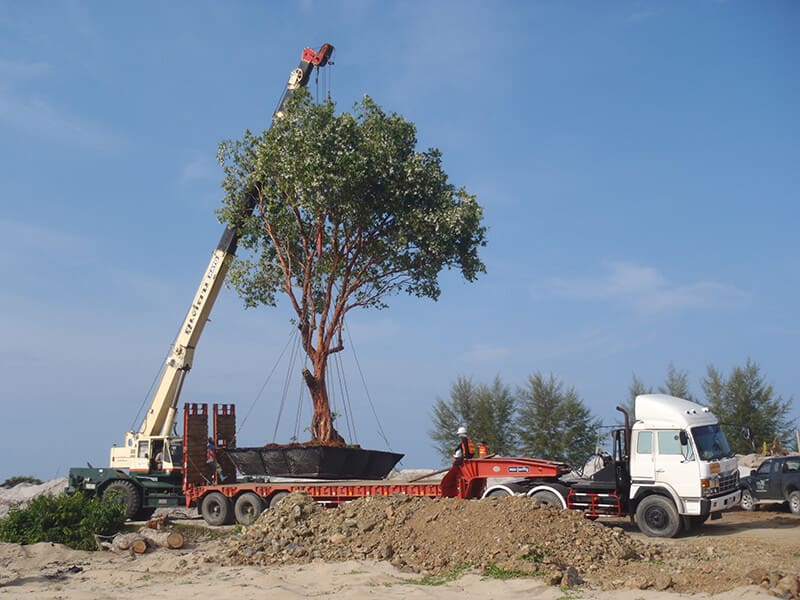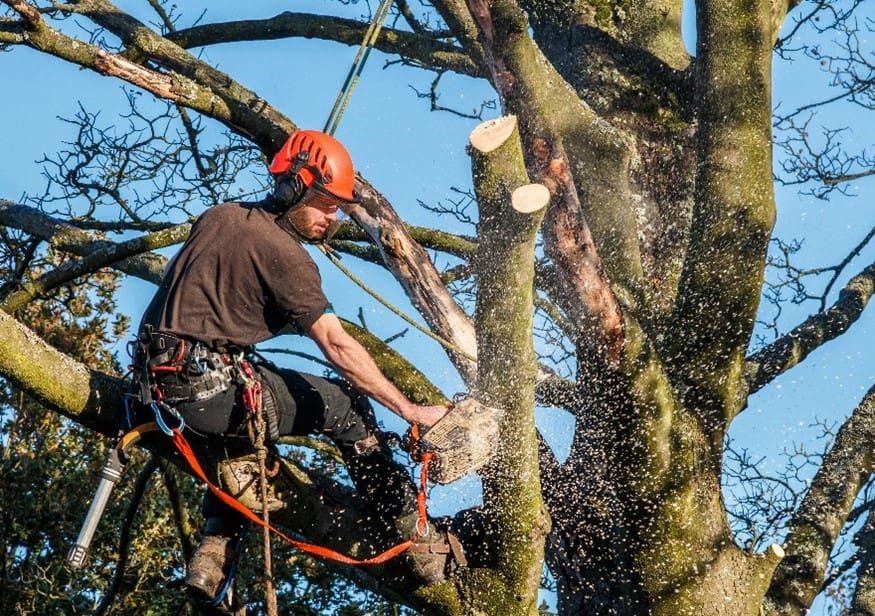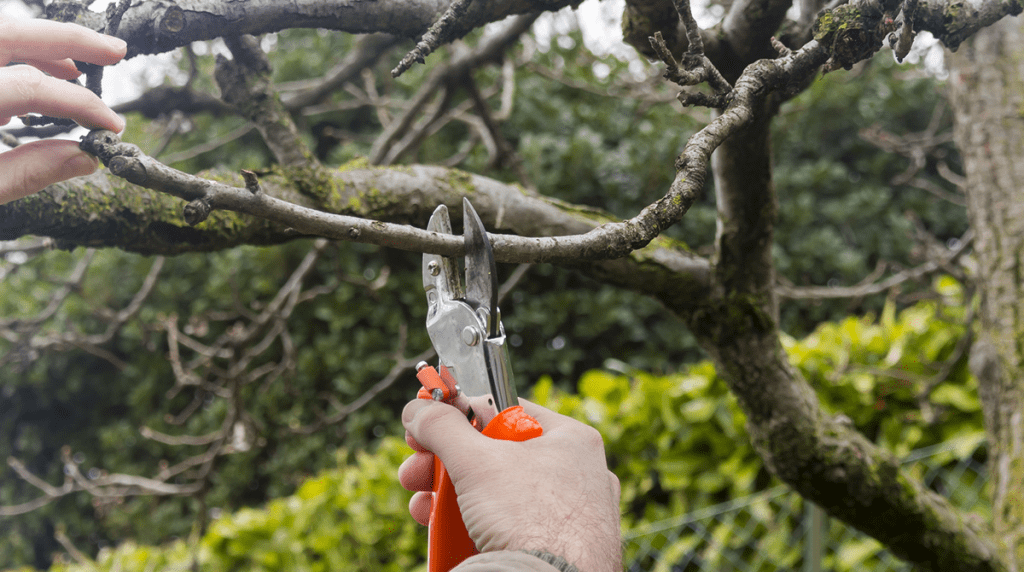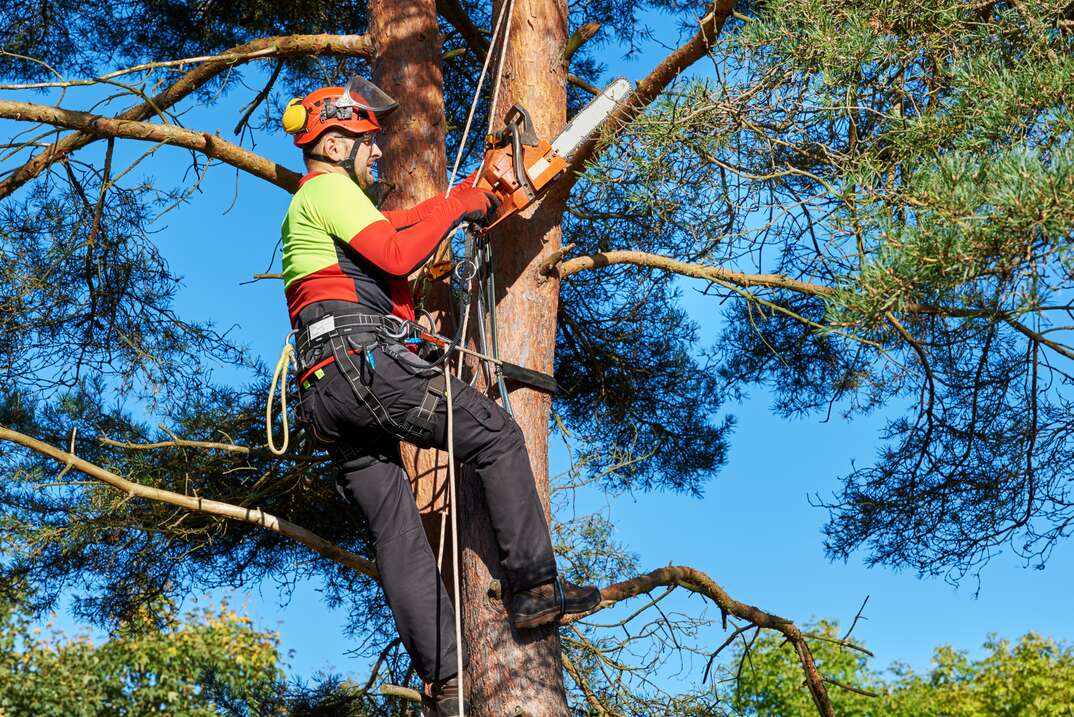Interviews with Experts
11 Essential Nutrients for Your Tree’s Health


Did you know that trees need more than just sunlight and water to thrive? In fact, they require a precise balance of 11 essential nutrients to maintain their health and vitality.
From macronutrients like nitrogen, phosphorus, and potassium, to micronutrients such as sulfur, iron, zinc, and manganese, each element plays a crucial role in the tree’s overall well-being.
Join me as we explore the importance of these nutrients and how they contribute to the beautiful and thriving trees in our world.
Macronutrients
Macronutrients are vital for my tree’s overall health and growth. These essential nutrients, consisting of nitrogen, phosphorus, and potassium, play a crucial role in supporting various physiological processes within the tree.
Nitrogen is responsible for promoting leaf and stem growth, enhancing the tree’s overall vigor.
Phosphorus contributes to the development of strong roots, optimizing nutrient absorption and water uptake. Additionally, it aids in the production of flowers and fruits.


Potassium helps regulate the tree’s water balance, strengthens its resistance against diseases, and improves overall stress tolerance.
As a tree owner, it’s essential to provide my tree with a balanced supply of macronutrients to ensure its optimal health and growth. Regular soil testing and appropriate fertilization will help maintain the necessary nutrient levels for my tree’s well-being.
Micronutrients
Moving on to micronutrients, these essential elements are equally important for maintaining my tree’s overall health and vitality. Micronutrients are minerals that are required in small quantities but play a crucial role in various physiological processes. These include elements such as iron, zinc, manganese, copper, boron, and molybdenum.
Iron, for example, is essential for chlorophyll production, while zinc is involved in enzyme activation and growth regulation. Manganese aids in photosynthesis and energy production, while copper is necessary for reproductive development. Boron supports cell wall formation and nutrient uptake, while molybdenum is crucial for nitrogen fixation.
Without these micronutrients, my tree wouldn’t be able to perform vital functions and would suffer from deficiencies that negatively impact its growth and development.
Speaking of nitrogen, let’s now delve into its importance for my tree’s well-being.
Nitrogen
Nitrogen is an essential nutrient for the growth of trees. It plays a crucial role in various physiological processes, such as photosynthesis, protein synthesis, and cell division.


Recognizing nitrogen deficiency symptoms, such as stunted growth and yellowing leaves, is important for timely intervention.
Additionally, understanding different nitrogen fertilization methods can help ensure that trees receive adequate amounts of this vital nutrient for optimal health and vigor.
Nitrogen for Growth
To promote healthy growth, trees require a steady supply of nitrogen, a key nutrient responsible for aiding in various metabolic processes. Nitrogen is essential for the production of proteins, enzymes, and chlorophyll, which are all crucial for the tree’s growth and development.
It plays a vital role in photosynthesis, the process by which trees convert sunlight into energy. Nitrogen also facilitates the absorption and utilization of other essential nutrients, such as phosphorus and potassium. Without an adequate supply of nitrogen, trees may exhibit stunted growth, yellowing of leaves, and reduced overall vigor.
To ensure that trees receive sufficient nitrogen, it’s important to provide them with proper fertilization, either through organic matter, such as compost or manure, or through inorganic fertilizers containing nitrogen compounds like ammonium nitrate or urea.
Nitrogen Deficiency Symptoms
As a tree, when I don’t have enough nitrogen, my growth suffers and I begin to show symptoms of deficiency. Nitrogen is an essential nutrient that plays a crucial role in various biological processes within me.
When I lack sufficient nitrogen, my leaves turn pale or yellowish, starting from the older ones. This is because nitrogen is a key component of chlorophyll, the pigment responsible for photosynthesis. Without enough nitrogen, my ability to produce energy through photosynthesis is compromised.


Additionally, I may experience stunted growth, as nitrogen is necessary for the production of proteins and enzymes that facilitate cell division and elongation. Furthermore, my overall vigor and health decline, making me more susceptible to diseases and pests.
Therefore, it’s crucial for my caretakers to ensure I receive an adequate supply of nitrogen to maintain my optimal growth and well-being.
Nitrogen Fertilization Methods
When I lack sufficient nitrogen, one effective way to address this deficiency is through the use of nitrogen fertilization methods.
Nitrogen is an essential nutrient for the health and growth of trees, playing a crucial role in promoting leaf development, photosynthesis, and overall vigor.
There are various nitrogen fertilization methods that can be employed to ensure optimal tree health.
One common method is the application of synthetic nitrogen fertilizers, which provide a quick and readily available source of nitrogen.
Another option is the use of organic nitrogen fertilizers, such as compost or manure, which release nitrogen slowly over time.


Additionally, nitrogen-fixing plants, like legumes, can be planted near trees to enhance nitrogen levels in the soil.
It’s important to carefully consider the specific needs of the tree and select the appropriate nitrogen fertilization method to promote healthy growth and vitality.
Phosphorus
Phosphorus is an essential nutrient for tree growth, playing a crucial role in various physiological processes. A deficiency in phosphorus can lead to stunted growth, reduced fruit production, and overall poor tree health.
To ensure optimal phosphorus levels, proper application techniques of phosphorus fertilizers need to be implemented, taking into consideration factors such as soil pH and nutrient interactions.
Phosphorus Benefits Tree Growth
I’ve found that incorporating phosphorus into my tree’s diet has significantly improved its growth. Phosphorus is an essential nutrient that plays a crucial role in promoting healthy tree development. Here are three ways in which phosphorus benefits tree growth:
- Enhanced root development: Phosphorus stimulates root growth, allowing trees to absorb water and nutrients more efficiently. This leads to stronger and deeper root systems, providing stability and support for the tree.
- Increased energy production: Phosphorus is involved in the conversion of sunlight into energy through photosynthesis. By facilitating this process, phosphorus helps trees produce the energy they need for growth and overall vitality.
- Improved fruit and flower production: Phosphorus is essential for the development of flowers and fruits. Its presence ensures proper cell division and promotes the formation of healthy blossoms and abundant, high-quality fruit.
Phosphorus Deficiency Symptoms
Continuing the discussion on tree health, a phosphorus deficiency can manifest in various symptoms that indicate the tree’s nutrient imbalance. Phosphorus is an essential nutrient for trees, playing a critical role in energy transfer, root development, and overall growth.
When a tree lacks sufficient phosphorus, it may exhibit stunted or slow growth, with smaller leaves and branches. The leaves may also turn dark green or purple, and the tree may experience reduced fruit or flower production. Additionally, phosphorus deficiency can weaken the tree’s immune system, making it more susceptible to diseases and pests.


Therefore, it’s important to identify and address phosphorus deficiencies promptly to ensure the tree’s optimal health and vigor.
Transitioning into the subsequent section on phosphorus fertilizer application techniques, let’s explore how to effectively replenish phosphorus levels in trees.
Phosphorus Fertilizer Application Techniques
To effectively replenish phosphorus levels in my tree, I employ various techniques for applying phosphorus fertilizer. Here are three effective methods that I use:
- Broadcasting: This method involves spreading the phosphorus fertilizer evenly over the soil surface surrounding the tree. It allows for maximum coverage and nutrient absorption, ensuring the tree’s overall health and growth.
- Deep Root Feeding: By injecting the phosphorus fertilizer directly into the soil around the tree’s root zone, this technique ensures that the nutrients reach the tree’s root system efficiently. It promotes deep root growth and enhances the tree’s ability to absorb phosphorus.
- Foliar Spray: Applying phosphorus fertilizer as a foliar spray allows the tree to absorb the nutrients through its leaves. This technique is particularly useful when the tree is experiencing severe phosphorus deficiency symptoms, as it provides a quick and direct supply of nutrients.
Potassium
Having discussed the importance of essential nutrients for tree health, I’ll now delve into the role of potassium in promoting optimal growth and vitality.
Potassium, symbolized as K in the periodic table, is a macronutrient that plays a crucial role in various physiological processes within trees. It’s involved in the regulation of water movement, nutrient uptake, and overall cellular functioning.
Potassium aids in the activation of enzymes responsible for photosynthesis, protein synthesis, and carbohydrate metabolism. Additionally, it helps to maintain the structural integrity of cell walls and enhances disease resistance.
Adequate potassium levels in the soil are essential for trees to develop strong roots, withstand environmental stresses, and produce high-quality fruits and flowers. Therefore, it’s imperative to provide trees with sufficient potassium through appropriate fertilization practices to ensure their overall health and vitality.


Calcium
As a tree care expert, I understand the importance of calcium in maintaining the health of your trees.
Calcium deficiency can manifest through symptoms such as stunted growth, leaf curling, and yellowing leaves.
Ensuring an adequate supply of calcium through the use of calcium-rich fertilizers can help promote strong and healthy tree growth.
Calcium Deficiency Symptoms
I experienced stunted growth and weak branches in my tree due to a lack of calcium. It was a distressing sight to witness my tree struggling to thrive.
The calcium deficiency symptoms were evident in the following ways:
- Leaf abnormalities: The leaves appeared distorted, with irregular shapes and edges. They also had a yellowish discoloration, indicating a lack of chlorophyll production.
- Fruit and flower problems: The fruits and flowers were undersized and deformed, failing to reach their full potential. This compromised their aesthetic appeal and overall quality.
- Reduced overall vigor: The tree lacked vitality and showed signs of weakness. It became more susceptible to diseases, pests, and environmental stressors.
These symptoms highlighted the importance of calcium for my tree’s health and well-being. Without sufficient calcium, it struggled to develop properly and faced various challenges.
Let’s delve into the significance of calcium in the next section.


Importance of Calcium
The lack of calcium in my tree’s diet had significant consequences on its overall health and vitality.
Calcium is an essential nutrient that plays a crucial role in maintaining the structural integrity of the tree. It’s responsible for the formation and stability of cell walls, ensuring proper growth and development.
Without sufficient calcium, the tree becomes susceptible to a range of problems, such as weak branches, stunted growth, and increased vulnerability to diseases and pests.
Additionally, calcium aids in the regulation of nutrient uptake and transportation within the tree, ensuring that all necessary elements are delivered to the various parts of the tree.
It’s important to provide adequate calcium to your tree to promote its overall health and longevity.
Calcium-Rich Fertilizers
To ensure optimal tree health, it’s crucial to incorporate calcium-rich fertilizers into your regular tree care routine. Calcium plays a vital role in maintaining the overall health and structure of your trees.
Here are three reasons why calcium-rich fertilizers are essential:


- Stronger and healthier branches: Calcium helps in the development of strong and sturdy branches, which can withstand harsh weather conditions and prevent breakage.
- Enhanced nutrient uptake: Calcium aids in the absorption and transport of other essential nutrients, ensuring that your trees receive the necessary elements for growth and development.
- Disease resistance: Calcium helps strengthen the cell walls of trees, making them more resistant to diseases and pests.
By incorporating calcium-rich fertilizers into your tree care routine, you’re providing your trees with the necessary nutrients they need to thrive.
Now, let’s move on to the next essential nutrient: magnesium.
Magnesium
As an essential nutrient for tree health, magnesium plays a vital role in various physiological processes. Magnesium is a crucial component of chlorophyll, the pigment responsible for photosynthesis. It aids in the absorption of sunlight and the conversion of carbon dioxide and water into glucose and oxygen.
Additionally, magnesium is involved in the activation of enzymes responsible for DNA and protein synthesis, as well as energy production. It also plays a role in regulating the transport of nutrients within the tree’s cells. Deficiencies in magnesium can lead to yellowing of leaves, reduced growth, and decreased fruit production.
To ensure optimal tree health, it’s important to provide an adequate supply of magnesium through fertilizers or organic matter.
Sulfur
I rely on sulfur to support my tree’s health and growth. Sulfur is an essential nutrient that plays a crucial role in maintaining the overall well-being of my tree.
Here are three reasons why sulfur is vital for my tree’s health:


- Promotes photosynthesis: Sulfur is a key component of chlorophyll, the pigment responsible for capturing sunlight and converting it into energy through photosynthesis. Without sulfur, my tree would struggle to produce enough energy for growth and development.
- Enhances nutrient uptake: Sulfur helps improve the absorption of other essential nutrients, such as nitrogen and phosphorus. It ensures that my tree can efficiently utilize these nutrients, leading to improved overall health and vitality.
- Supports disease resistance: Sulfur has antimicrobial properties that help protect my tree from harmful pathogens and diseases. It strengthens the tree’s immune system, reducing the risk of infection and promoting long-term health.
Iron
Iron plays a crucial role in maintaining the overall health and vitality of my tree. As an essential micronutrient, iron is involved in various physiological processes that contribute to the tree’s growth and development.
Iron is necessary for the synthesis of chlorophyll, the pigment responsible for capturing sunlight and facilitating photosynthesis. Without sufficient iron, my tree would suffer from chlorosis, a condition characterized by yellowing of the leaves due to a lack of chlorophyll production.
Additionally, iron is involved in enzyme activity and plays a vital role in energy metabolism. It aids in the production of adenosine triphosphate (ATP), the energy currency of the tree.
To ensure my tree’s well-being, I must provide a sufficient supply of iron through appropriate fertilization or soil amendments.
Zinc
To continue supporting my tree’s health and vitality, it’s important to address the next essential nutrient: zinc. Zinc is a crucial element that plays a pivotal role in the overall development and well-being of trees.
Here are three reasons why zinc is essential for your tree’s health:
- Promotes growth and development: Zinc is necessary for the production of auxins, a group of hormones that regulate cell division and elongation. This nutrient aids in the development of new shoots and leaves, ensuring healthy growth.
- Enhances nutrient uptake: Zinc facilitates the absorption and transportation of other essential nutrients, such as nitrogen and phosphorus. It helps improve the tree’s ability to access and utilize these nutrients efficiently.
- Boosts disease resistance: Zinc strengthens the tree’s immune system, making it more resistant to diseases, pests, and environmental stressors. It plays a crucial role in the production of enzymes and proteins that defend against pathogens.
Manganese
One important nutrient for your tree’s health is manganese, which plays a crucial role in various physiological processes.


Manganese is an essential trace element that’s involved in photosynthesis, enzyme activation, and the synthesis of chlorophyll.
It acts as a catalyst in a wide range of biochemical reactions, including the breakdown of carbohydrates and the production of energy.
Manganese also aids in the formation of lignin, a structural component of cell walls, which provides strength and rigidity to the tree.
Additionally, it helps in the defense against pathogens and serves as a cofactor for antioxidant enzymes, protecting the tree from oxidative stress.
To ensure optimal growth and development, it’s important to provide your tree with an adequate supply of manganese through proper soil management and fertilization practices.


Hello there! I’m Logan Foster, the green-thumbed social media marketer behind the vibrant world of 1800TreeGuy.com. With roots firmly planted in arboriculture, I’ve branched out to help clients cultivate their dream outdoor spaces, one leafy canopy at a time. My knack for nurturing nature is more than a profession—it’s a way of life.
When I’m not talking trees and teaching the art of arboreal care, you can find me cheering on the Bulldogs—my alma mater’s pride and my forever team. My environmental studies there didn’t just teach me about ecosystems; they instilled a lifelong passion for protecting our planet.
Off the clock, I’m an adventurer at heart. Whether it’s trekking the Appalachian trails, pedaling down a mountain path, or crafting guides to share the wonders of the wild, I’m happiest with soil under my nails and the sun on my face. And let’s not forget Yoda, my pug sidekick. He may not have mastered the art of stillness, but his joyful grins are my daily dose of happiness.
I’m all about making connections—between people and the great outdoors and between my clients and their ideal landscape visions. My approach is personal; every tree has a story, and every garden reflects its caretaker.
If you want to green your scene or share in my outdoor escapades, give me a shout on Instagram or Facebook. Let’s cultivate a conversation and grow a community rooted in a love for the lush life.







